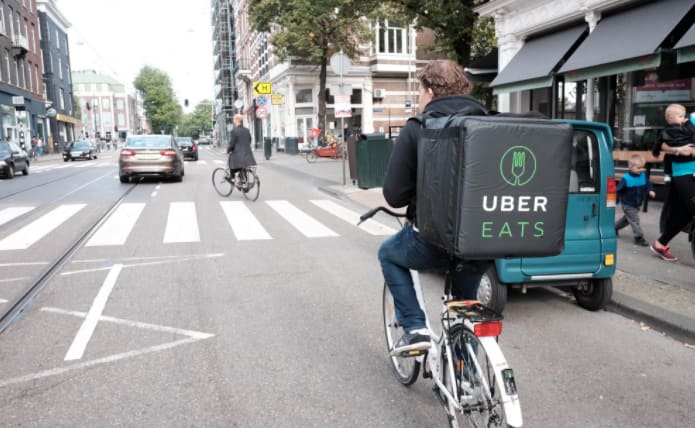You’re all set at the restaurant, expecting the usual 100 or so people on a weeknight. But what if you have to cook for 120, and the extra 20 are for delivery customers? Do you need extra staff? Probably not — most shifts have some excess capacity. The rent and the service staff are the same — you’ll use a fraction more fuel and the extra food needed for additional meals.
If your food costs are a well-managed 25 per cent, adding the 30–35 per cent fee of a delivery service such as Uber Eats or Deliveroo still adds up to 55–60 per cent of the total sale price. Let’s add 10 per cent for fuel, extra cleaning and a few more kitchen hours and you still have a margin of 30 per cent. If each of those 20 deliveries was worth $25, that’s another $500 of sales and a gross profit of $150 or $900 over six days. The numbers can work.
Can we really turn our back on food delivery services? Try telling that to the dad who’s been told to organise dinner by a frantic mum or a hungry traveller in a hotel. Food delivery services are growing rapidly because people love the convenience; failing to implement delivery gives business straight to competitors.
There’s good money to be made, but not by operating the same way you usually do. Here, some tips to make delivery work for you.
DO IT YOURSELF
You can take care of delivery in-house by adding a white-label order system such as OrderUp to your website. It can be branded to look like your own, accept payments and notify customers in the same way as Uber Eats and Menulog do. You pay a small fee to use the service instead of 35 per cent. Delivery can be made by your own drivers, and there are plenty of people with a motorbike and ambition looking for steady work.
DELIVERY PARTNER OPTIONS
If you don’t want to hire delivery staff, consider using a service such as Drive Yello (Sydney and Melbourne) to do it for you. Deliveroo has also announced a modified system called Deliveroo Marketplace+ with lower fees if you provide the driver.
COST-EFFECTIVE FOOD OFFERING
Offer a menu that cuts food costs to the bone. Pizzerias and Asian restaurants sell high-profit items that avoid expensive proteins and focus on flour, rice and noodles. You don’t have to offer your whole restaurant menu for delivery, just items with the best margins. You can also increase the delivery selling prices.
IMPROVE YOUR KITCHEN PRODUCTIVITY
Most back-of-house operations still use the same equipment and systems that were in place 30 years ago and there’s been a revolution in cooking methods and technology.
When you think about it, it’s rare to see order screens (bump screens) in kitchens. Why is this? The screens allow for precise tracking of orders and cooking times. Once you know these, productivity can be measured and improved. As long as chefs insist on sticking to paper printers, we’re stuck in the ’80s. Modern delivery services can be integrated with your POS, so the production of orders is smooth and organised. It’s time to get more productivity from the kitchen, and do it with less stress.
UTILISE SOCIAL MEDIA
Keep building customer connections through Facebook and Instagram and continue to ask for contact details. Businesses complain that delivery services steal their customers, but they’ve usually done very little to build their own list. Constant marketing is essential for a successful operation.
NEGOTIATE
Negotiate with the delivery services — 35 per cent seems to be the top rate, but are you offering something different to the others? Most people want the convenience of using one app, and they like the usability of Uber Eats, Menulog and Deliveroo.
There’s money to be made by joining the party.
This article originally appeared in Hospitality‘s October issue. Subscribe here.
Image credit: AppJobs

